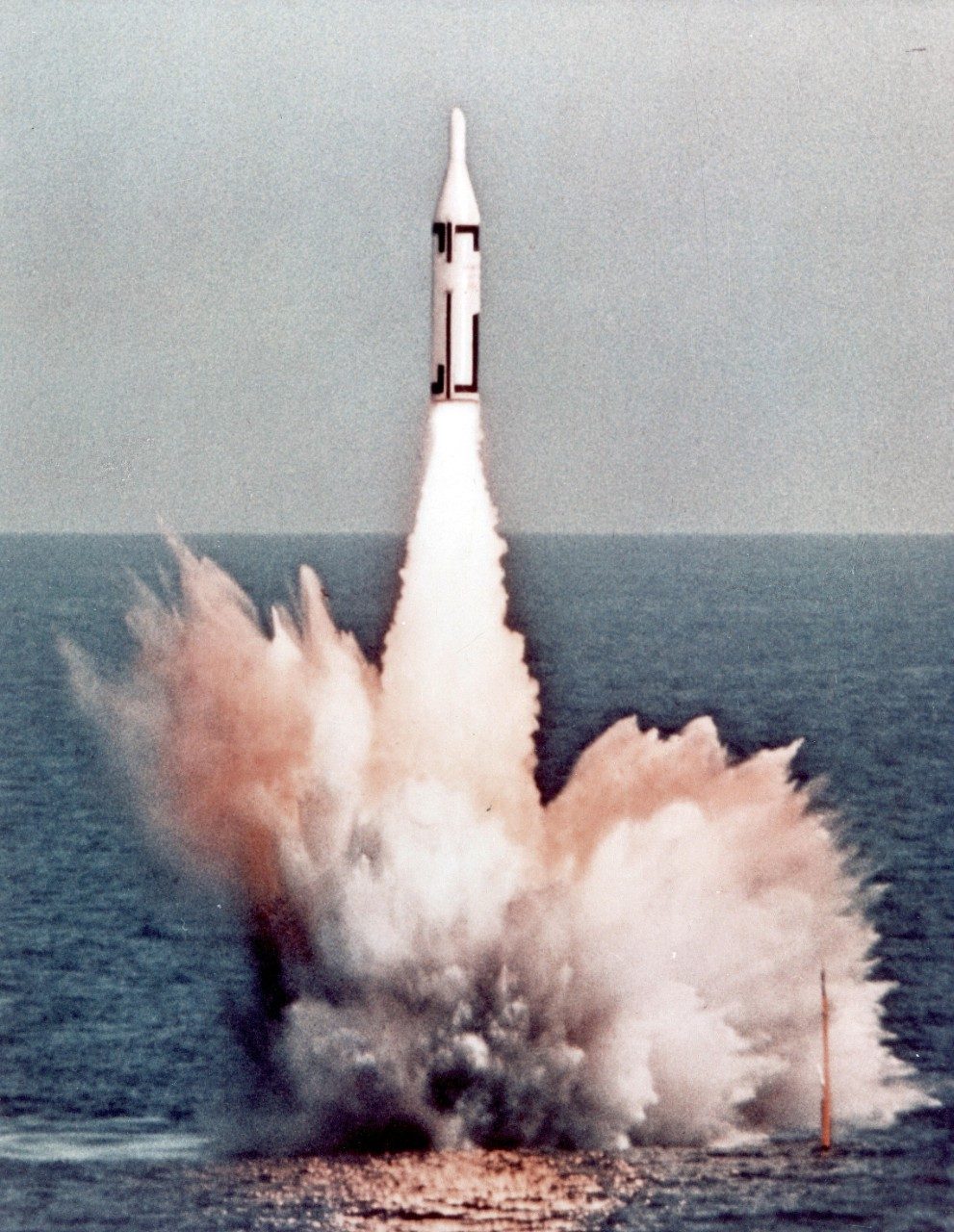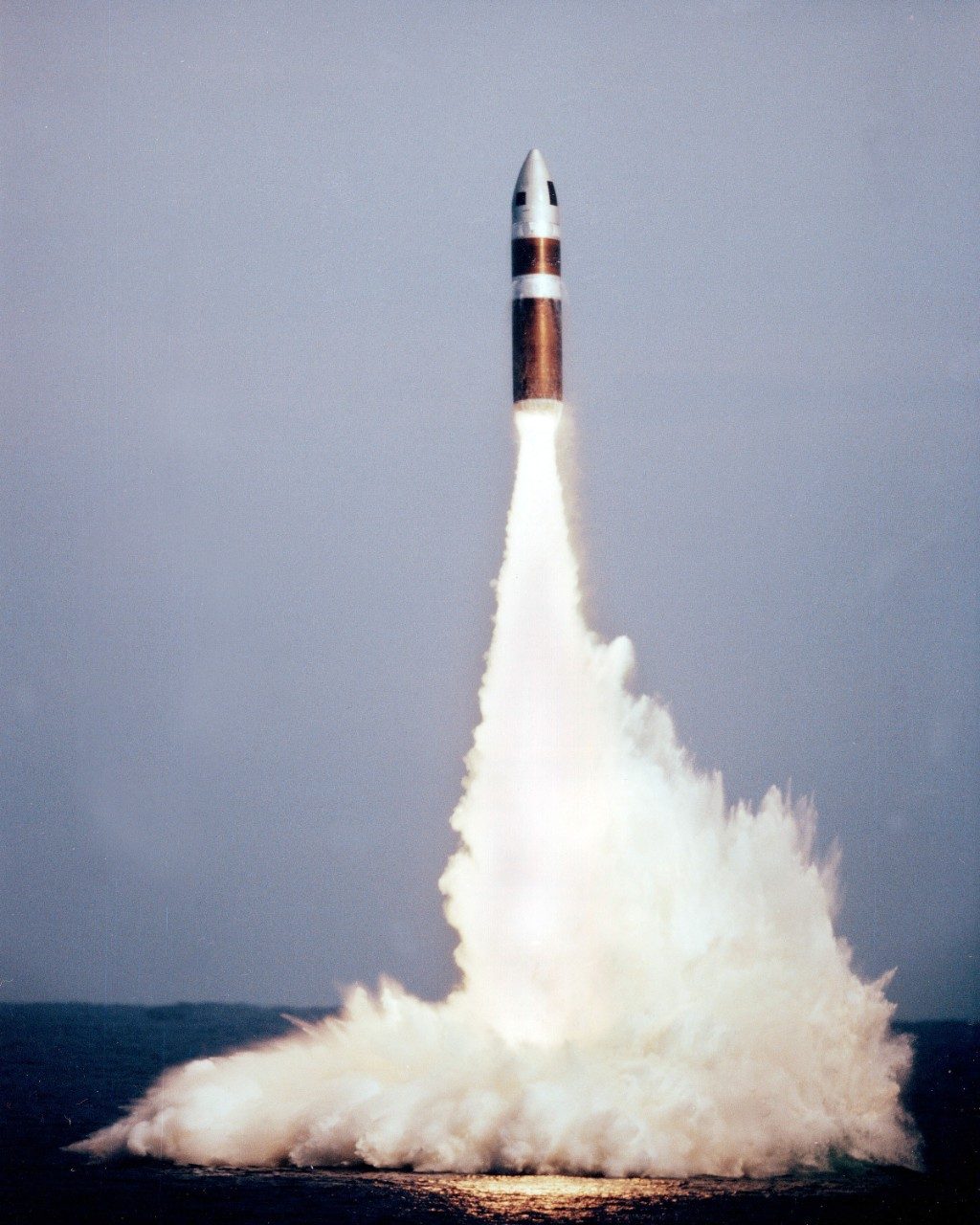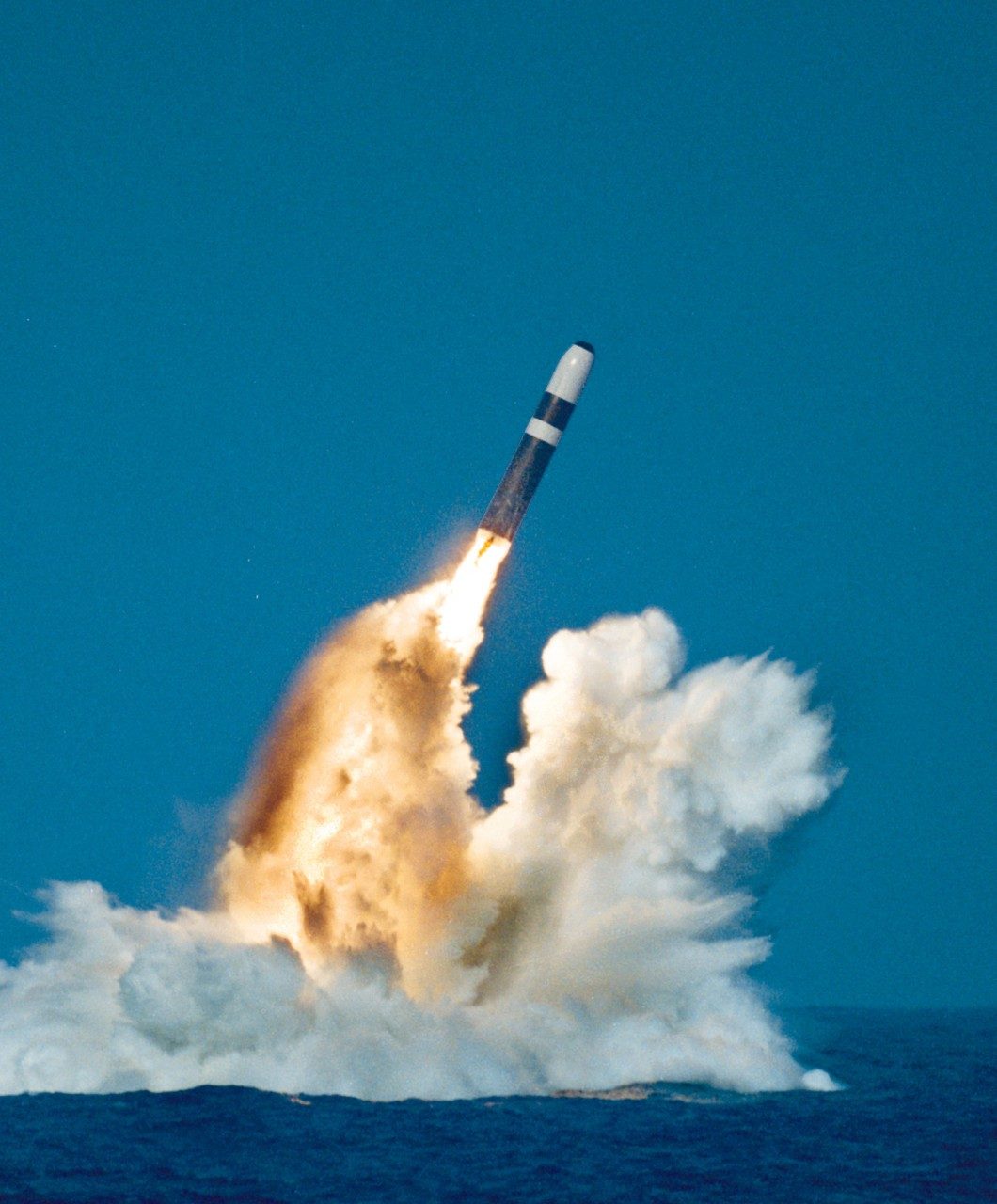In some ways, the initiative was more complex than the manned space programs and just as daunting. But the schedule was tighter. It was late in 1955, and the National Security Council called for the U.S. Navy to develop submarine-launched nuclear ballistic missiles, creating the critical third leg of the Nuclear Triad. Submarine systems were about to become inordinately complex.
Rear Admiral Robert Wertheim spoke of the daunting new technologies that were required. “Including its warhead and its guidance and navigation and fire control and launching and handling, the sub had to be given the ability to know exactly where it was, it would have to know exactly which way was up, which way was North and launch a missile from a moving platform, from under water,” he said.
The Navy awarded Lockheed a contract to manage the development of its fleet ballistic missile system, and the team hit the ground running. The new technologies were developed on the fly, at a feverish pace, with outcomes far from certain.
Saturday, Sunday, and Bunch of Nights
In the Navy hull classification “SSBN,” the letters “SS” stand for submersible ship, B denotes ballistic missiles, and the N indicates it is nuclear powered. In Navy slang, they’re called ‘boomers,’ but the hard-working Navy and Lockheed teammates who worked around the clock on the project coined a new acronym for SSBN: “Saturday, Sunday, and a Bunch of Nights.”
As if the long hours and complex challenges were not enough, reports that the Soviets were also hard at work on their own submarine-launched nuclear missiles compounded the urgency.
A new missile, the Polaris, was quickly designed for submarine launch. The complex launch process would begin by ejecting the missile from the sub on a plume of compressed air, then triggering its rocket booster to ignite once it had cleared the surface of the water, at a safe distance from the vessel.
Many setbacks took place as the technologies were developed, tested and refined, but the team wisely never used the term “failure” to describe them. Even those launches that produced little more than a pinwheeling rocket and a dramatic conflagration of exploding rocket fuel were considered opportunities to gain insight and keep the program moving. And this attitude sent the team back to the drawing board again and again, undaunted in pursuit of the next creative solution to that day’s challenge.

“Perfect”
In early July 1960, The USS George Washington put in to Cape Canaveral to pick up two Polaris missiles. On July 20, the crew of the George Washington executed the first successful launch of a Polaris missile from a submerged submarine. “Polaris – From Out of the Deep to Target. Perfect” read the message from the George Washington to the White House.
Lockheed also led the development of subsequent submarine-launched missile programs. The more refined Polaris A-2 soon followed in 1961, the Poseidon followed 10 years later, and the Trident in 1979. Despite its complexity, the FBM program would eventually be deemed safer and more effective than surface launch.
The race to launch the first ballistic missile from a submarine was a close one. Forty days after the initial US launch, on September 10, 1960, in the White Sea off Russia’s Northwestern coast, the Soviets successfully launched their first submarine ballistic missile.
Lockheed would soon become involved more deeply in another critical responsibility: hunting Soviet subs.

Needle in a Haystack
Locating an enemy submarine in the vast expanse of the world’s oceans is like finding a needle in a haystack. The story of anti-sub warfare is the story of submarines playing cat and mouse in the oceans’ depths, a complex acoustic environment that frequently masks the sound of submarine operations.
As the submarines of the 1970s developed quieter operating platforms, passive sonar systems had to work harder to separate the target from the surrounding ambient ocean sounds, and the era’s developing computer systems and their increasing processing speeds were increasingly brought to bear in the hunt. The Navy would turn to Lockheed for the first active-passive digital sonar system for submarines in 1972 (AN/BQQ-5), the Los Angeles class submarine passive sonar suite (AN/BSY-1) in 1982 and Sea Wolf Combat System (AN/BSY-2) in 1988, which integrated sonar tracking, monitoring and the missile launch into one system.
In the 1990s, new developments in the commercial computer sector provided fertile ground for a fresh approach.
Lockheed Martin introduced a new submarine sonar system called ARCI (Acoustic Rapid Commercial off-the-shelf Insertion), which used commercial computer equipment installed in open architecture. The system, which allowed for frequent hardware and software upgrades, was highly effective, offering improved acoustic quieting measures at a far lower cost than previously possible. ARCI has been through four phases of upgrades since the late ’90s, and the innovative system has now been installed on the entire U.S. sub fleet.

The Hunt Continues
Today’s focus has shifted to littoral waters, the shallow areas near coastlines, where the Navy must patrol and defend against small subs, underwater mines, and fast attack boats.
Detecting and localizing, quiet subs in the especially noisy shallow-water sonar field has made updates to the ARCI submarine sonar system all the more critical. Lockheed Martin’s continuing refinements bolster detection capabilities in littoral waters and include the sub fleet’s new Large Aperture Bow, TB-29 Towed Array and Low Cost Conformal Array.
Lockheed Martin remains a vital cog in the Fleet Ballistic Missile program, as well. The Trident II (D5) Missile, first deployed in 1990 and currently aboard US Navy Ohio-class and Royal Navy Vanguard-class submarines, can now travel more than 4,000 miles to target.
As reliable as in the past, the Trident II (D5) Missile recently achieved its 143rd consecutive successful test flight. With the objective of maintaining the Trident system through the year 2040, Lockheed has recently undertaken the Trident II (D5) Life Extension Program and the Trident Strategic Weapon System modernization, which brings the same commercial off-the-shelf efficiencies pioneered in the ARCI system to Trident submarines.
Sources and Additional Reading
- Blair, Clay. Silent Victory: The U.S. Submarine War Against Japan. Annapolis: Naval Institute Press, 2001.
- Chinworth, Commander William C. “The Future of the Ohio Class Submarine.” US Army War College, 2006.
- Miller, Edward S. War Plan Orange: The US Strategy to Defeat Japan, 1987-1945. Annapolis: Naval Institute Press, 2007.
- Sontag, Sherry; Drew, Christopher. Blind Man’s Bluff: The Untold Tale of American Submarine Espionage. New York City: William Morrow Paperbacks, 2000.
- http://www.bbc.co.uk/news/10129703, accessed 17 November 2012
- http://www.defenseindustrydaily.com/usa-upgrades-submarine-fleet-acoustics-under-arci-program-updated-01952/, accessed 17 November 2012
- http://www.naval-technology.com/features/feature121453, accessed 17 November 2012
- http://www.latimes.com/news/nation-and-world/la-sci-minisub7-2009dec07,0,6991792.story, accessed 18 October 2012.




